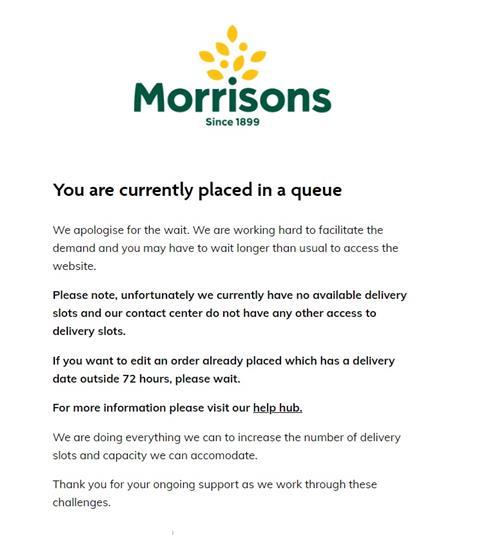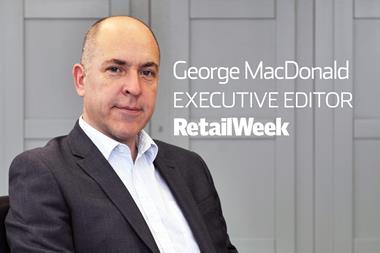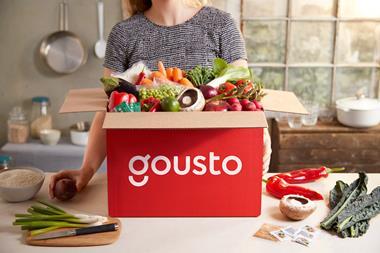As the demand for online grocery deliveries rocketed over the past few weeks, many supermarkets buckled under the pressure. Retail Week looks at whether the inability to meet demand will cause long-term damage to grocery ecommerce.
- Ocado admits “no matter how hard we work, we do not have enough capacity to serve these unprecedented levels of demand”
- Almost impossible to commission, build and staff new infrastructure in weeks, says former supply chain boss
- No online delivery slots available until late April in some regions
- Trustpilot data shows customer satisfaction with several grocers has plummeted
Over the last few weeks, what in any normal time would have been thought extraordinary has become ordinary. Nowhere has that been more obvious than in food retail, which has become one of the front lines of the coronavirus crisis.
With people limited to one trip outside a day, and some of society’s most vulnerable being advised not to leave their homes for at least 12 weeks to protect themselves from the virus, many have turned to online to buy their groceries.

Even the prime minister pushed shoppers to use the internet, using one of the daily Downing Street briefings to urge people to “use food delivery services where you can”.
Yet, at a time when it’s been needed most, online grocery has struggled to meet this – undoubtedly huge – demand. Delivery slots are booked up for weeks and many who were gearing up to give online food shopping a go for the first time have slammed down their computers in frustration and schlepped back to the local supermarket.
Ocado in the spotlight
Nielsen figures published last week showed online grocery delivery spend shot up 14% in March, with capacity constraints stopping that number from growing more, in line with the 20.6% increase seen across grocery more widely. Kantar found that online grew 13%.
Fairly or unfairly, the most vocal customer anger on social media around lack of available delivery slots has been directed at Ocado.
.@Ocado you’ve got about 10,000 angry people asking you the same question. Are you able to specify a time that you might answer one of them? pic.twitter.com/wsVN8NZwhC
— Tom Peck (@tompeck) March 29, 2020
That is perhaps understandable, given that Ocado has more than 20 years experience in online grocery and, until this point, a glowing reputation among its customers.
An Ocado spokeswoman said it was dealing with “10 times higher than normal” levels of demand and admitted that “no matter how hard we work, we do not have enough capacity to serve these unprecedented levels of demand”.
Kantar data shows Ocado effectively acquired 133,000 new customers in less than two weeks before it closed its website to new shoppers on March 18.
However, Ocado chief financial officer Duncan Tatton-Brown says the virus has exposed some of the issues with the Ocado model. Namely how dependent it is upon its automated infrastructure to function.
Ocado currently has three customer fulfilment centres (CFCs) in operation in the UK, but only one is currently running at full capacity. As Tatton-Brown explains: “The biggest constraint is not the number of vans or drivers. It’s the capacity in our customer fulfilment centres. I would love to wave a magic wand have Erith [depot] at 200,000 orders per week but isn’t like that.”

Shore Capital analyst Clive Black says given how publicly Ocado has touted its automated model, its inability to meet an increase in demand must be seen as a “pretty fundamental failure”.
But former Tesco supply chain boss Neil Ashworth sympathises with Ocado’s plight. “The challenge of the Ocado model is that it’s infrastructure-based,” he says, explaining the grocer’s reliance on machinery to pick and pack.
“The infrastructure they operate has a set capacity. Increasing capacity means increasing infrastructure. Commissioning new infrastructure, building it, staffing it and bringing it up to speed in just a few weeks wouldn’t be possible even without the pandemic.”
Independent grocery analyst Bryan Roberts agrees and says Ocado’s much-vaunted model actually rendered it the most vulnerable grocer when it came to dealing with the surge in demand.
“Ocado of all the online grocers was the most limited, because it can’t just pull new capacity out of the clear blue. It had an already stretched system thanks to the fire that destroyed its Andover CFC last year and has been saying in its last few updates that its depots were already running at full or near capacity,” he says.
“Sure, they could have hired more vans and drivers. But there’s always going to be a limit to the throughput they can get through their existing system.”
Juggling in-store and online
Customer ire has not been limited to Ocado, the big four have also come in for their fair share of criticism too.
This huge demand has also highlighted the weaknesses of the pick-from-store model grocers such as Tesco, Morrisons and Asda use to fulfil online orders.
GlobalData grocery analyst Thomas Brereton says this model is by its nature reliant on both staff, when many may be off sick or caring for someone who is, and stock availability at stores to fulfil orders.
“Problems have been compounded by the issue of in-store availabilities, particularly in those first weeks when people were panic buying. There simply wasn’t enough product to both keep the shelves stacked and get online orders fulfilled as well.”

Roberts’ says he spoke to store managers who had seen increases in purchases on certain categories of 200%. “People were just buying anything they could get their hands on,” he says. “And in categories they normally wouldn’t. Pet food, sanitary products. You name it, it was getting bombed out.”
While availability issues may have hampered online fulfilment initially, measures taken by the supermarkets have stabilised stock levels. But securing an online delivery slot within the next two weeks from any of the major grocers is akin to winning the lottery.
A lack of pickers, packers, drivers and, crucially, vans has hindered supermarkets fulfilling the growing demand for online orders.
Roberts believes UK grocers were particularly ill-prepared for this surge as many of the big supermarkets were not geared up for ecommerce growth.
“Prior to this kicking off, online growth had plateaued somewhat and big grocers had stopped heavily recruiting online shoppers because it was hard to make any money,” he says.
Slow to react
Both Roberts and Brereton believe supermarkets could have been quicker to react to the coronavirus-led online surge by hiring more pickers, drivers and vans faster.
Internationally, a number of supermarkets did just that. Australian grocer Woolworths partnered with Australia Post to use its fleet of vehicles, while Aldi in Germany agreed to ‘lease’ furloughed McDonald’s workers across the country.
Belatedly, however, the big four grocers have begun to address the issues with their online service. Tesco last week revealed efforts to increase capacity with 200 new delivery vans, 2,500 new drivers and more than 5,000 pickers. It has also expanded its home delivery and click-and-collect slots to 780,000 a week, up from 660,000 two weeks ago. It plans to add a further 100,000 “in the coming weeks”.
Availability of online grocery delivery slots
| London | Newcastle | Swansea | |
|---|---|---|---|
| Tesco | None until April 23 | None until April 23 | 10-11 am Mon April 13 |
| Sainsbury’s | New slots only for vulnerable customers | ||
| Asda | Nothing until beyond April 7 | None beyond April 7 | None beyond April 7 |
| Morrisons | None in April | None in April | None in April |
| Ocado | Slots only available for priority customers | ||
| Waitrose | New slots only for vulnerable customers | ||
Tesco boss Dave Lewis says the virus had led to “unprecedented levels of demand” for online grocery shopping. “We’re doing everything we can to increase the number of slots available and to support vulnerable people,” he said.
Sainsbury’s has also boosted capacity. Two weeks ago it had 370,000 online grocery slots but by the end of this week it will have 600,000 delivery and click-and-collect windows.
Meanwhile, Morrisons and Marks & Spencer have begun offering pre-prepared, ambient boxes of groceries for delivery. This helps relieve pressure on pickers who are compiling multiple boxes from the same items. Using ambient goods means deliveries can be made in standard vans that do not need multiple chilled compartments.
Brereton says this is a good first step but wonders whether the grocers could do more with ambient grocery deliveries, such as tapping into the furloughed delivery staff and fleets of multichannel retailers that have suspended their ecommerce businesses.
Ashworth agrees, and says “looking at it analytically, is there more the grocers could be doing? Of course, there’s always more they could do,” before adding: “The question is do these organisations have the resources to put some of those ideas into practice very quickly? Maybe some of them just don’t.”
Long-term damage?
While customers complaining on social media is one thing, have the past few weeks really hurt online grocery?
Broker Jeffries analysed Trustpilot data that showed customer satisfaction rates had plummetted for some retailers – particularly Ocado. The online grocer’s Trustpilot rating is 3.2 overall; however, February’s average rating was 2.5, falling to 1.7 in March.
Trustpilot ratings for grocers in February and March
| Sainsbury’s | Ocado | Asda | Iceland | Tesco | Morrisons | Waitrose | Overall | |
|---|---|---|---|---|---|---|---|---|
| March | 1.5 | 1.7 | 1.8 | 2 | 2 | 2 | 2.4 | 2.1 |
| February | 1.7 | 2.5 | 1.5 | 1.8 | 2 | 1.9 | 2.5 | 2 |
| Lifetime | 1.9 | 3.2 | 1.8 | 2 | 2.8 | 3 | 2.6 | 2.4 |
Before coronavirus hit, ecommerce was not exactly soaring in the grocery sector. According to research put out last year by Mintel, online grocery sales accounted for 7% of total market share. Even Ocado, despite its specialisation in this area, accounted for just over 1% of the overall grocery market.
However, in recent years numerous analysts have predicted that online would become the fastest-growing part of the grocery market. Research in 2019 by IGD predicted online could be worth as much as 14% of the total market by 2024.
Will falling consumer confidence in the model mean online grocery sales fail to achieve those numbers?
Black says all the grocers “will need to reflect upon the damage they’ve done to individual customer relationships and brand damage once the dust settles on this crisis”.
However, Roberts thinks there will be no “long-term backlash” from consumers. “For all the vocal critics, there will be many people for who this is their first experience with online grocery delivery and it’s worked. Those people will be converted once this is over.”
He also believes that given the efforts many supermarkets are going to in order to increase capacity, some businesses may refocus their strategy to push online customer acquisition once the virus passes.
Ashworth agrees and says the pandemic may contribute to what he calls “consumer education” around the effort required to make online deliveries happen.
“While there may be some critics out there, a more balanced customer response after this might be that ‘actually, it’s more challenging than we thought’.”
Whether limited by infrastructure issues or simply by a freakish surge in demand, it is clear that no grocer has performed flawlessly online over the past month.
But these are unheard-of circumstances. The grocery sector will have to wait to see if consumers will be forgiving once these extraordinary times come to an end.



























No comments yet